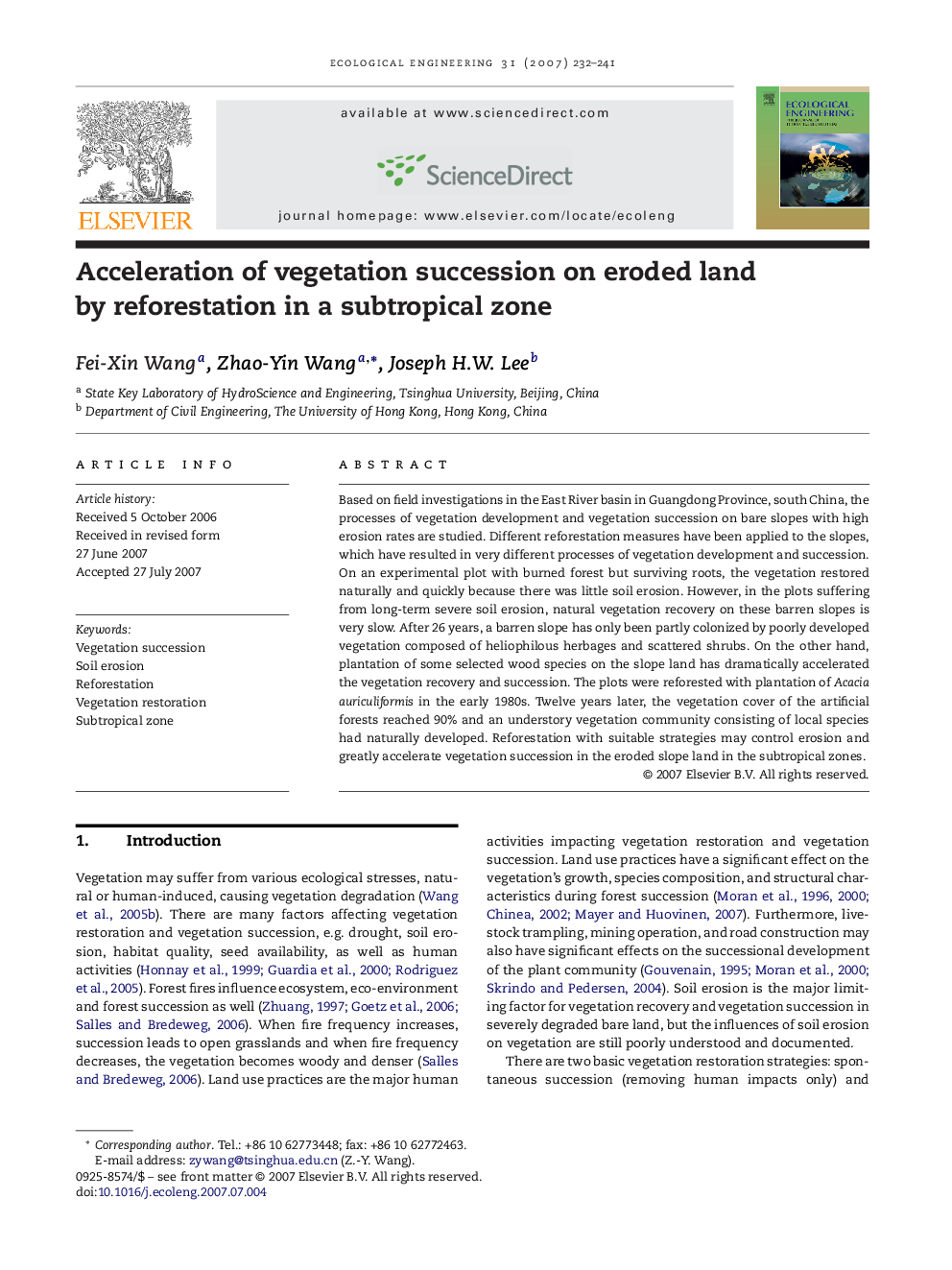| Article ID | Journal | Published Year | Pages | File Type |
|---|---|---|---|---|
| 4390907 | Ecological Engineering | 2007 | 10 Pages |
Based on field investigations in the East River basin in Guangdong Province, south China, the processes of vegetation development and vegetation succession on bare slopes with high erosion rates are studied. Different reforestation measures have been applied to the slopes, which have resulted in very different processes of vegetation development and succession. On an experimental plot with burned forest but surviving roots, the vegetation restored naturally and quickly because there was little soil erosion. However, in the plots suffering from long-term severe soil erosion, natural vegetation recovery on these barren slopes is very slow. After 26 years, a barren slope has only been partly colonized by poorly developed vegetation composed of heliophilous herbages and scattered shrubs. On the other hand, plantation of some selected wood species on the slope land has dramatically accelerated the vegetation recovery and succession. The plots were reforested with plantation of Acacia auriculiformis in the early 1980s. Twelve years later, the vegetation cover of the artificial forests reached 90% and an understory vegetation community consisting of local species had naturally developed. Reforestation with suitable strategies may control erosion and greatly accelerate vegetation succession in the eroded slope land in the subtropical zones.
